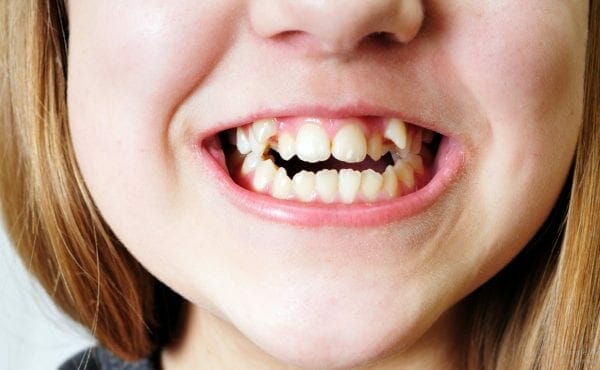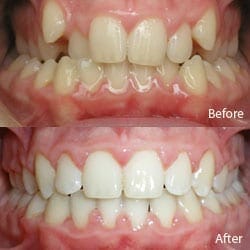A smile is often considered a window to your personality. It is one of the first things people notice about you, and it can leave a lasting impression. However, a beautiful smile is not just about the esthetics; it involves a harmonious relationship between various components including teeth alignment and the jaw structure.
Why a Balanced Facial Structure Matters
A balanced facial structure is not merely an esthetic goal; it is an important aspect of oral health and overall wellbeing. The harmony between the skeletal structures of your face influences essential functions such as your ability to chew food properly and speak clearly. In the hands of experienced orthodontists, achieving proper facial balance can become an attainable goal.
Dr. Ryan Redford and Dr. Michael Burke, the orthodontists at Burke & Redford Orthodontists, have dedicated over 30 years to transforming smiles in the Inland Empire. With offices conveniently located in Temecula and Lake Elsinore, they have become the trusted choice for the parents of children and teenagers seeking expert guidance and treatment of various orthodontic issues.
We will explore the intricacies of dentofacial discrepancies, particularly focusing on skeletal class II patients. Our objective is to explain these concepts, helping you understand how orthodontic advancements can pave the way to a confident smile.

Understanding Malocclusions
Simple Yet Important Terms
A malocclusion, simply put, is a misalignment of the teeth, often rooted in a discrepancy between the jaw’s skeletal structures. This section will break down complex terms into simpler explanations to provide you with a clearer understanding.
Identifying Malocclusions
Identifying a malocclusion involves observing the relationship between the upper and lower jaw structures. In skeletal class II cases, the lower jaw is positioned behind the upper jaw, leading to what lay people refer to as an overbite. Understanding the nature and magnitude of this jaw size mismatch is crucial in making effective treatment plans.

Dentofacial Discrepancies in Skeletal Class II Patients
What Does “Skeletal Class II” Mean?
In simple terms, a skeletal class II condition refers to a specific type of jaw misalignment where the lower jaw is underdeveloped or receded, causing the upper jaw to appear more pronounced. Or, in other words, making the lower jaw appear less pronounced.
In some cases, the lower jaw not only sets behind the upper jaw but can do so asymmetrically when viewing the face from the front. This causes the dental midline to become off center, which is also known as a midline shift.
Having a skeletal class II condition can affect both the functionality of your bite and the harmony of your facial aesthetics. It might influence your speech, your ability to chew food efficiently, and even your facial profile. Recognizing these effects is the first step towards seeking appropriate orthodontic intervention.
Dentofacial Discrepancies in Skeletal Class II patients can encompass a variety of malocclusions and issues, including:
- Overbite: This is a prominent feature of class II malocclusions, where the upper front teeth overlap the lower front teeth excessively in the vertical direction.
- Open Bite: Sometimes, individuals with class II malocclusions may have an open bite, where there is a vertical space between the edges of the upper and lower teeth when the biting down on the back teeth.
- Crossbite: In some cases, a crossbite can occur, where the upper teeth sit inside the lower teeth, which can be a result of a narrow jaw or abnormal tooth position.
- Crowding: Many individuals with class II malocclusions experience crowding, where there isn’t enough space in the jaws to accommodate all teeth properly, leading to misaligned or overlapped teeth.
- Spacing Issues: Conversely, some individuals may have too much space between teeth, leading to gaps or spacing issues.
- Impacted Teeth: Although not exclusive to class II malocclusions, impacted teeth can sometimes be seen, where teeth fail to erupt through the gums into their expected positions.
- Protruding Front Teeth: Due to the forward position of the upper jaw or the backward position of the lower jaw, the front teeth can often protrude, creating an imbalanced facial profile and the inability of the lips to close together comfortably and without strain.
- Issues with Molar Relationships: The molar relationships are often disturbed in class II cases, with the first lower molar positioned more towards the back relative to the upper first molar.
Understanding these potential issues is critical to devising effective treatment strategies for individuals with dentofacial discrepancies in skeletal class II malocclusions.

Orthodontic Management
First Step – Diagnosis
Proper diagnosis is the cornerstone of effective treatment. At Burke & Redford Orthodontists, a thorough examination supported by digital X-rays is the initial step to identify the exact nature of the discrepancy.
Customized Treatment Plans
Dr. Ryan Redford and Dr. Michael Burke believe in a personalized approach to orthodontic care. Based on the diagnosis, they will develop a treatment plan that is uniquely suited to each patient, focusing on correcting the misalignment and enhancing overall facial harmony.
Treatment Options
Braces and Beyond
Braces are a common and effective tool in correcting dentofacial discrepancies. However, depending on the complexity of the case, additional treatments and orthodontic devices might be necessary.

Overbite correction is typically best achieved during the adolescent growth spurt and bite correction appliances are often considered in conjunction with braces during this important time.
Combined Approaches for Severe Overbites
In cases where braces alone may not suffice, a combined approach involving orthodontic and surgical procedures may be proposed to achieve the best results. This collaborative approach between the orthodontist and orthognathic surgeon ensures patients receive the most comprehensive care, leading to balanced and functional results. Surgery is only considered for adults and once jaw growth is complete.

Schedule Your Free Consultation with Burke & Redford Orthodontists
Getting started is simple. You can schedule a free orthodontic consultation at our Temecula or Lake Elsinore offices by calling (951) 699-8011 during business hours, where you will receive a comprehensive evaluation and personalized treatment plan. Our team is committed to providing a smooth and reassuring consultation process, setting the stage for your successful orthodontic journey.
Here are our contact details for your convenience:
Temecula Office
Address: 41238 Margarita Rd Ste 101, Temecula, CA 92591
Phone: (951) 699-8011
Office Hours: M-F 9:00 a.m. – 5:00 p.m.
Lake Elsinore Office
Address: 351 Railroad Canyon Rd Ste C, Lake Elsinore, CA 92532
Phone: (951) 699-8011
Office Hours: Open 1st and 3rd Wednesdays 1:00 p.m. – 5:00 p.m.
Your Smile, Our Commitment
At Burke & Redford Orthodontists, we prioritize your care. Leveraging over three decades of expertise in the Inland Empire, Dr. Ryan Redford and Dr. Michael Burke are devoted to offering more than just teeth alignment; they provide comprehensive orthodontic solutions that prioritize both esthetics and function.